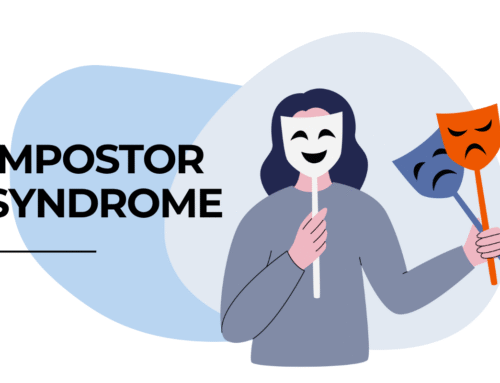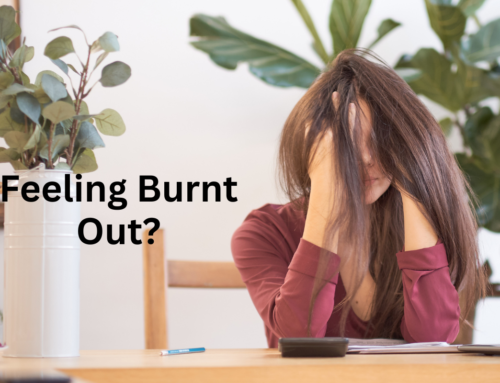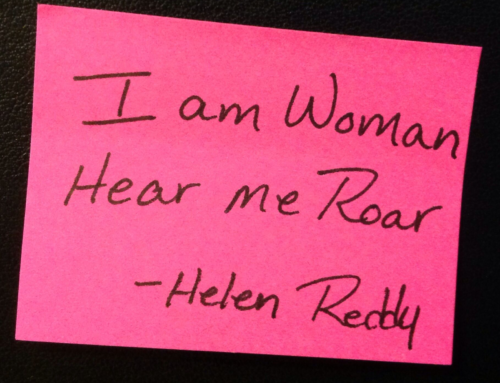“The speed of change is accelerating creating both chaos and coherence – disruption is the constant.”
– Howard Martin of HeartMath
Okay world, what now? It is crazy out there…

My last two blog posts, Are You Thriving Or Just Surviving? How To Thrive In Today’s Whirlwind World and Feeling Feelings: How To Lean Into Faith Rather Than Fear In Uncertain Times, addressed VUCA—volatility, uncertainty, chaos and ambiguity—as well as the whirlwind of our lives that seems to have now turned into a total storm! I also discussed how staying present to our feelings and feeling our feelings is an important piece of health and self-care right now.
Distancing Through Resisting The Present
Although it’s so important to feel our feelings, so many of us have been conditioned to protect ourselves through resisting feeling fully. And most of us do that through some form of distancing. Within a global health crisis, we have been given directives to social distance, stay at home, not gather in groups and stay six feet away from others. These are exactly the social constructs that are helping us and others slow the spread of Covid-19.
While this form of distancing is critical for health and safety right now, there is another form of distancing, known as personal distancing. When engaged in personal distancing, we try to get a sense of validity, self-worth and security through withdrawing or acting superior, aloof or emotionally distant.
The root cause of this behavior is that of avoiding the present. Avoiding situations, people or our own thoughts and feelings is one of the most common ways of not dealing with uncomfortable situations or feelings. Our reactive socialized selves are conditioned to turn away from others and ourselves as a means to not have to deal with feelings and the fear of being overwhelmed.
Socially and emotionally, this is where all addictions lie. We numb, distract, avoid or distance ourselves from our own feelings, and many times the feelings of others, so we do not have to deal with them.
I know that my cup runneth full of wine each night. What are you doing to deal with the craziness of the world right now?
There are a lot of great tools in the news and on social media about self-care, which I listed in my last blog on Feeling Feelings.
In taking better care of myself and the clients and people in my life who I support, I have revisited my training in HeartMath.
Focusing On Heart Intelligence Versus Head Intelligence
Stephanie Marie, a journalist for We Are The Change, writes,
“To a degree beyond belief, the heart performs the most influential role in the body.
We have been taught that it is only our brain that is in control, while the rest of our body obediently responds to its commands. Although the brain is important, this misconception is not the case and mainstream science has now revealed the full story.
The Institute of HeartMath, a nonprofit research and education organization, has uncovered these revolutionary findings and is continuing to research this significant relationship between the heart and the brain. With over two decades of scientifically validated research, their examinations serve to explain exactly to what extent the heart contributes to our daily lives.
Research from HeartMath has introduced that not only the brain but also the heart itself is an intelligent system. HeartMath has recorded the heart to be approximately 60 times greater electrically and up to 5,000 times stronger magnetically than the brain. This awareness places the brain relatively weak in comparison to the heart.” Read her full article here.
The situation that we’ve suddenly found ourselves and communities in is not affecting our intellect. Rather, it is affecting our being, our bodies and our hearts. We’re all in this together, and our cognitive thinking isn’t the antidote. As my dear friend Betsy Wiersma says, “love is the antiviral right now.” And, love comes from the heart, not the head.
Developing Resilience
One of the keys to the HeartMath work is how it helps us build resiliency. “Resilience is the capacity to prepare for, recover from and adapt in the face of stress, challenge or adversity,” according to the Institute of HeartMath. A developing resilience is our capacity to say, “Oh God, here I am again” and helps us bounce back and recover from challenging situations. Developing resilience helps us to be in the space of responding versus reacting to what happens to us.
“You can think of your current level of resilience as the amount of energy you have stored in your inner battery, from which you can draw from to handle daily challenges and tasks. Resiliency is the energy you have available—not just physically, but also mentally and emotionally. When you have a high level of resilience, you have a greater capacity to remain calm, think clearly and be in control of your emotions so you do not overreact,” according to HeartMath’s Building Personal Resilience Guide.
There are four domains of resilience according to HeartMath.
- Physical – flexibility, endurance and strength
- Mental – flexibility, attention span, ability to focus, ability to incorporate multiple points of view
- Emotional – flexibility, positive outlook and self-regulation
- Spiritual – flexibility, commitment to values and tolerance of others values and beliefs.
Note the word flexibility in each of these four domains.
How flexible are you being with yourself and others right now, especially with the distancing requirements and the sudden shift in our everyday lives?
All four domains are important, however, we are usually more dominant in one domain. And, for most of us, the domain that we lose a lot of energy is in the emotional domain.
Understanding Emotions And Feelings
“Emotions are not good or bad, but they do have either a renewing or depleting effect on our physiology and therefore affect our performance.”
– HeartMath
Emotions are seemingly complex, and I like to distinguish between “feelings” and “emotions.” Feelings are that of being hungry, angry, sad, mad, fearful, etc. Emotions are the energy that is expelled based on the feeling. E-motion is energy. For instance, when we stay present to a feeling rather than resist it, most times we are able to dispel it. I call this 90 seconds of insane courage. Yesterday, I was walking my dog and received a phone call regarding my niece. The information shared with me did not meet my expectations. I got very triggered, yet allowed myself to take a deep breath, center into the moment and let the angst run through my body. By the time I arrived home I was present and able to discuss the situation rationally and even find a benefit. Unfortunately, most of us were never taught how to stay with a feeling, and we are very socialized to emote or distance ourselves, which doesn’t aid us in developing resilience.
Think of a tornado. A spout forms on the ground and moves upward. When it connects with all the other energy in the field it starts to spread out and swirl, which creates even more energy and can be very disruptive. Yet, the eye of the storm is quiet and peaceful. What if we were able to feel our feelings fully without getting lost to the emotional energy?
Building Coherence
Our bodies are amazing in supporting us. Our heart beats without us doing anything. We breathe in and out without effort and our cells and systems operate autonomically. Autonomic is another word for automatic. According to HeartMath, the autonomic nervous system (ANS) manages 90 percent of our body’s functions, including breathing, heart rate, digestion and immune systems .
Much like working out our physical bodies helps us build muscle, HeartMath techniques help us build coherence. “Coherence is the state when the heart, mind, and emotions are in energetic alignment and cooperation,” according to HeartMath Institute Research Director Dr. Rollin McCraty. “It is a state that builds resilience – personal energy is accumulated, not wasted – leaving more energy to manifest intentions and harmonious outcomes.”
For more information please visit The Heart’s Intuitive Intelligence: A path to personal, social and global coherence.
Steps for Quick Coherence Technique
Please give yourself the gift of doing this basic HeartMath Quick Coherence® Technique.
Step 1: Focus your attention in the area of the heart. Imagine your breath is flowing in and out of your heart or chest area, breathing a little slower and deeper than usual.
Step 2: Make a sincere attempt to experience a regenerative feeling such as appreciation or care for someone or something in your life.
This very simple technique aligns your head and your heart.
Understanding Heart Rate Variability
Although heart rate variability (HRV) manifests as a function of your heart rate, it actually originates from the nervous system. The autonomic nervous system (ANS), which controls the involuntary aspects of your physiology, has two branches, parasympathetic (deactivating) and sympathetic (activating). The parasympathetic branch, often referred to as “rest and digest,” handles inputs from internal organs, such as digestion or your fingernails and hair growing. It causes a decrease in heart rate. The sympathetic branch, often called “fight or flight,” reflects responses to things such as stress and exercise, and increases your heart rate. Heart rate variability comes from these two competing branches, simultaneously sending signals to your heart. If your nervous system is balanced, your heart is constantly being told to beat slower by your parasympathetic system, and beat faster by your sympathetic system. This causes a fluctuation in your heart rate.
For more information on HRV please go here.
There are many studies that show that a healthy HRV helps with developing resilience and behavioral flexibility. It can help us to adapt to all the stress in the world out there that is so crazy right now.
HeartMath and Global Coherence Initiative
Finally, let’s think about the collective. The whole world is suffering right now. Another piece of the HeartMath work is that they have used science and research to show us that when we are more aligned in our hearts, we actually affect the entire planet.
Here are the studies that reflect this effect. On 9/11 the sensors that track planetary coherence showed the science of heart rate variability.
Global Magnetic Field:
Global Consciousness Project RNG peak 9/11 2001
Earth Magnetic Field Peak 9/11 2001
In June 2017, I was fortunate to train with Gregg Braden and Howard Martin at their conference From Chaos to Coherence: The Power to Thrive in Life’s Extremes. They shared the science of the events of 9/11 and how “unprecedentedly strong” the spike was when we all united that day.
This is coherence! Of these graphs, on the World Dreams Peace Bridge website, Arjun Walia writes, “show individual minds, emotions are creating a field of global, planetary consciousness. This field of consciousness seemingly influences matter and physical energy fields. Means for me it is reasonable to believe in the power of intending peace, praying, meditating, dreaming for peace, especially in larger and focused groups.”
So what is possible with the Covid-19 pandemic? We are at a choice point. Do we choose love or fear? A Course in Miracles says, “attempting the mastery of fear is useless. In fact, it asserts the power of fear by the very assumption that it needs to be mastered. The true resolution rests entirely on mastery through love.”
I choose love. How about you? If you’re struggling with developing resilience, tapping into your heart or need support during these uncertain times, I’d love to connect. Please reach out.
In deep love and gratitude,
Christy






